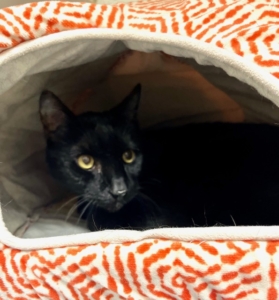Commitment to Care: Understanding Pain in Our Beloved Pets: Acute and Chronic Pain

Our pets hold a special place in our hearts. They are more than just animals; they are cherished members of our families. Just as we would do anything to keep our human loved ones free from pain and discomfort, the same holds true for our furry, feathered, or scaled companions. However, there is a crucial difference between us and them when it comes to pain: we can communicate our discomfort, while our pets cannot. Understanding the types of pain your pet might experience and how they express it is essential for providing them with the care and support they deserve.
There are 2 types of pain. To effectively treat our pets, we must distinguish between the two primary categories of pain. Acute and Chronic.

Acute Pain- is usually sudden and intense, often resulting from injuries, surgery, or specific medical conditions. An example of Acute Pain: your dog is playing and hurts his paw running. Some signs of Acute Pain include:
- Vocalizing – your pet may cry out, yelp, or whimper in pain.
- Limping or favoring a specific limb: not use that limb or just “toe touch” the ground
- Aggressive behavior: Pets in acute pain may become unusually aggressive due to their discomfort.
- Restlessness: They may pace, pant excessively, or have difficulty finding a comfortable position.
Chronic Pain- is ongoing and persistent, often resulting from conditions like arthritis, dental issues, or long-term illnesses. This type of pain can be challenging to detect because it gradually becomes a part of your pet’s life. Some signs of Chronic pain include:
- Altered Behavior- Watch out for changes in your pet’s behavior, such as increased aggression, depression, or irritability.
- Lethargy: Pets in chronic pain may become less active and seem less interested in play or exercise.
- Appetite Changes: A loss of appetite or changes in eating habits can be indicative of underlying pain.
- Altered Grooming: Pets may neglect grooming themselves if it causes discomfort.
- Avoiding Certain Movements: Pets might hesitate to climb stairs, jump on to furniture, or perform activities they once enjoyed.


Unlike humans who can put in words their pain, our pets rely on non-verbal cues to let us know they are hurting. This is where our role as responsible pet parents comes into play. It is our duty to observe our pets closely and be attuned to any unusual behaviors or physical changes. If you suspect your pet is in pain, consult your veterinarian promptly. Your veterinarian will perform a thorough exam, run some diagnostic tests, and develop a tailored treatment plan to help your pet.
In conclusion, our pets are indeed family members, and as their caregivers, it is our responsibility to ensure their well-being. Understanding the types of pain they may experience, acute or chronic, is essential for early detection and appropriate intervention. By paying attention to their behavioral changes and seeking professional veterinary care when needed, we can help our beloved pets live happier, healthier, and pain-free lives. Their well-being is a testament of our love and commitment as pet parents.
